Donald Trump's baseless claims that his loss to Joe Biden was due to election fraud are set for their toughest test this week with hearings set in his federal lawsuit in Pennsylvania.
The case is one of a flurry of legal actions that have sought to undo the result of the November 3rd US presidential election.
None of the lawsuits appears likely to change the outcome, legal experts have said. In the main, judges have found the campaign’s claims to be lacking in evidence of significant irregularities. Trump has had some successes on questions of process or small numbers of ballots that would not affect the overall vote.
The Financial Times has summarised the main legal challenges made by Trump’s legal team since election day:
PENNSYLVANIA
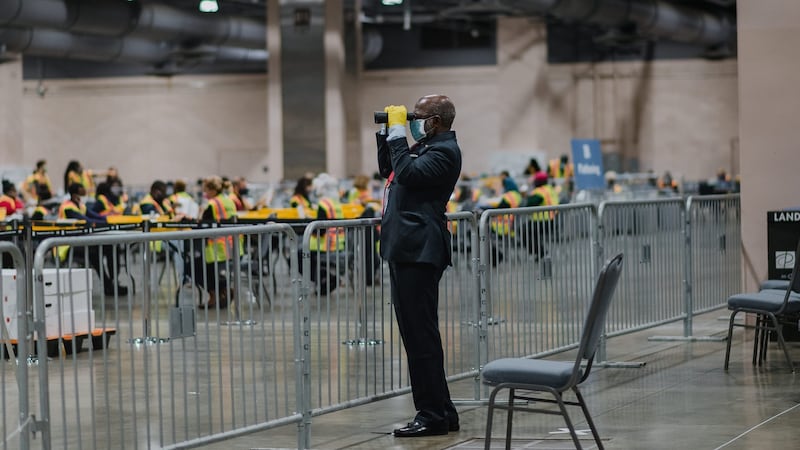
Joe Biden’s margin of victory: 68,312 votes, or 1 per cent
Certification deadline: November 23rd
State court cases
Name: Donald J Trump for President, Inc v Kathy Boockvar and County Boards of Elections
Relief sought: Tossing out some ballots
Current status: Relief granted
Number of ballots at issue: Unclear, but expected to be small
Voters in Pennsylvania can fix or “cure” issues with their ballots after polling day. For example, the required identification for a mail ballot might be missing. County elections boards try to reach such voters to allow them to cure these problems so their vote can still count.
The Pennsylvania secretary of state, Kathy Boockvar, had issued guidance to allow voters to cure mail ballot ID issues by November 12th, three days after the deadline under state law.
This was in line with a three-day extension to mail ballot deadlines ordered by the Pennsylvania supreme court, a decision that is the subject of continued litigation at the US supreme court.
The Trump campaign sued to prevent the counting of any mail ballots where the ID was cured in the extended period set out by Boockvar. A state judge granted their request.
Name: In re: Canvassing Observation
Relief sought: Standing closer to poll workers as they counted ballots
Current status: On appeal
Number of ballots at issue: Unclear if any at all
Votes in Philadelphia were counted at the Pennsylvania Convention Center, where local election officials had instituted social-distancing rules as a result of the coronavirus pandemic. These included limiting how close election observers could get to the poll workers as they counted ballots. The count was also livestreamed online.
The Trump campaign sued to be allowed to stand as close as six feet away. A state trial court denied the request, but a state appeals court sided with the campaign. The case is currently before the Pennsylvania supreme court.
Name: In re: Canvass of Absentee and Mail-In Ballots of November 3rd, 2020 General Election
Relief sought: Throwing out ballots
Current status: On appeal
Number of ballots at issue: 8,329
The Trump campaign had challenged the validity of several thousand votes in Philadelphia through five cases in the state’s court of common pleas, alleging that the mail ballots were unlawful because the voters had failed to write certain information on the envelopes, such as the date or their name and address.
All five of the cases were rejected on November 13th. The judge noted that “the pre-printed ballot already contains the elector’s name and address on the pre-printed exterior envelope” and said there was no requirement for voters to write the date. The Trump campaign has appealed.
Name: Donald J Trump for President v. Montgomery County Board of Elections
Relief sought: Throwing out ballots
Current status: Denied
Number of ballots at issue: 592
The Trump campaign had also challenged the validity of ballots in Montgomery County, on similar grounds to the Philadelphia case, alleging that ballots that did not have handwritten addresses on the envelope were invalid. A state judge on Friday rejected the lawsuit.
Name: Donald J Trump for President v Bucks County Board of Elections
Relief sought: Throwing out ballots
Current status: Pending
Number of ballots at issue: 881
The Trump campaign has similarly challenged the validity of some ballots in Bucks County. The case is pending and a hearing is set for Tuesday.
Federal court cases
Name: Donald J Trump For President, Inc et al v. Boockvar et al
Relief sought: Prevent the certification of Pennsylvania’s election result
Current status: Pending
Number of ballots at issue: Potentially all
This lawsuit brought together a broad swath of alleged irregularities in Pennsylvania’s election to claim that the entire process was fundamentally unconstitutional. It sought to prevent the state from certifying its results, which it must do by November 23rd.
The lawsuit claimed that ballots were treated differently in different counties, that voters were improperly allowed to fix issues with defective ballots, and that large collections of mail ballots were unlawfully counted.
The case included claims about how close observers could stand to poll workers, and allegations from a Pennsylvania postal worker that his supervisor tampered with mail ballots. The worker walked back the claims when interviewed by United States Postal Service investigators.
Pennsylvania said the lawsuit was brought “on the basis of repeatedly rejected legal theories and no evidence”.
On November 12th, the Trump campaign’s law firm in the case, Porter Wright Morris & Arthur, moved to withdraw from the case. On November 15th, the Trump campaign amended its lawsuit, striking out its complaints about poll observers.
Hearings are set for Tuesday and Thursday.
Name: Donald J Trump for President, Inc v Philadelphia County Board of Elections
Relief sought: Halting the count in Philadelphia
Current status: Settled
Number of ballots at issue: None
While Pennsylvania was still tallying votes, the Trump campaign rushed into federal court seeking an emergency injunction to stop the count in Philadelphia. It claimed its observers were not allowed to be present in the counting room. At an emergency hearing, the campaign’s lawyer admitted that, in fact, some of its observers were present, prompting the judge to ask: “I’m sorry, then what’s your problem?”
The case was settled at the hearing with an agreement that Republicans and Democrats could have up to 60 observers each in the counting room.
MICHIGAN
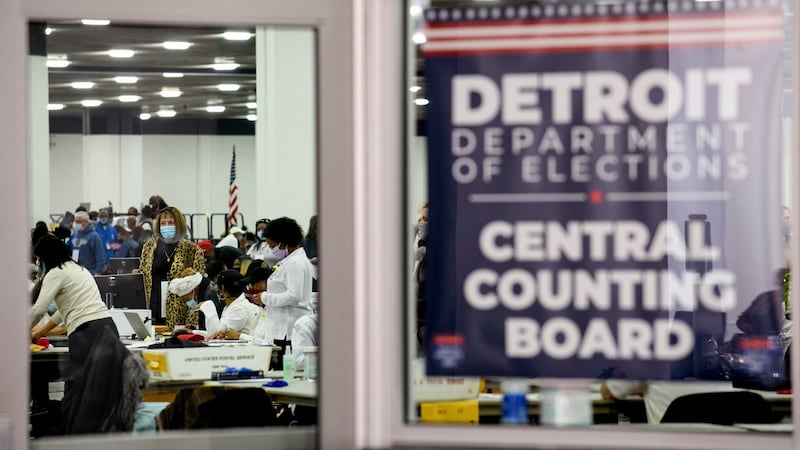
Joe Biden’s margin of victory: 147,398 votes, or 2.6 per cent
Certification deadline: November 23rd
State court cases
Name: Donald J Trump for President, Inc et al v. Jocelyn Benson
Relief sought: Halting the counting of absentee ballots
Current status: Request denied, appeal pending
Number of ballots at issue: Unclear
Under Michigan law, ballot drop boxes must be monitored by video surveillance cameras. The Trump campaign sued to stop the counting of absentee ballots because it claimed that its observers had the right to view all video footage of the drop boxes before the ballots could be counted. The lawsuit also included claims from a poll watcher who had heard from a poll worker that they had been told by other poll workers to change the dates on late ballots.
The judge denied the request to stop the count, calling the poll watcher’s claims “inadmissible hearsay within hearsay” and noting that the Trump campaign had not cited any Michigan law that required drop box video footage to be provided for review to election observers.
The Trump campaign appealed the ruling. The appeal was initially rejected because the filing did not follow Michigan judicial rules for appeals.
Federal court cases
Name: Donald J Trump for President, Inc et al v Jocelyn Benson et al
Relief sought: Prevent the certification of Michigan’s election results
Current status: Pending
Number of ballots at issue: Potentially all
The Trump campaign's lawsuit alleged that Michigan state officials had allowed "fraud and incompetence to corrupt the conduct of the 2020 general election". It included more than a hundred affidavits from Republican observers who claimed they witnessed election irregularities and were denied the chance to meaningfully observe the count. Many of the allegations related to Wayne County, which includes Detroit.
The Democratic attorney general of Michigan, Dana Nessel, has called the case "baseless", adding: "If I ever walked into court with claims this baseless and this frivolous, I would be sanctioned."
NEVADA
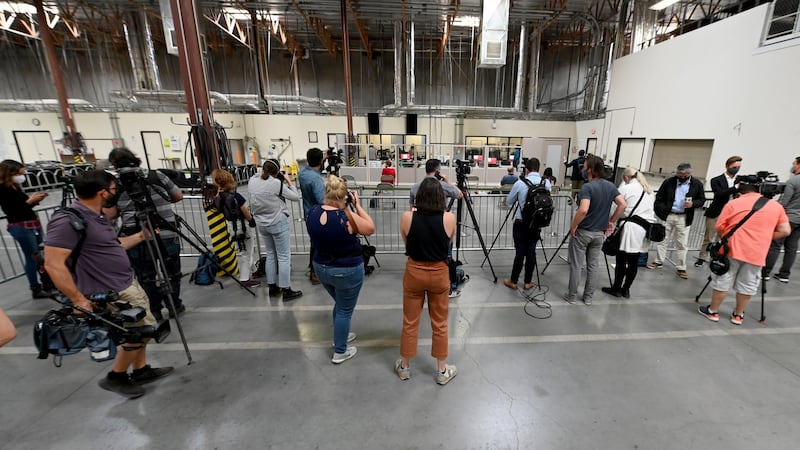
Joe Biden’s margin of victory: 33,596 votes, or 2.4 per cent
Certification deadline: December 1st
Federal court cases
Name: Stokke et al v Cegavske et al
Relief sought: Preventing the use of signature verification machines in Clark County
Current status: Emergency motion for relief denied
Number of ballots at issue: Unclear if any
The Trump campaign was not a party to this case, but it did hold a press conference touting the lawsuit, so the Financial Times is including it. The case was brought by four Nevada Republicans against Clark County, the largest in the state and home to Las Vegas.
One of the plaintiffs claimed that the use of signature-matching machines meant that a mail ballot had been improperly recorded in their name. A second claimed they were not allowed to observe the count.
At a hearing on November 6th, a federal judge noted that the plaintiffs had no evidence to show that the signature-matching machines affected their ballot. The motion for emergency relief was denied because the plaintiffs did not provide “a sufficient legal showing and a sufficient evidentiary basis”.
ARIZONA
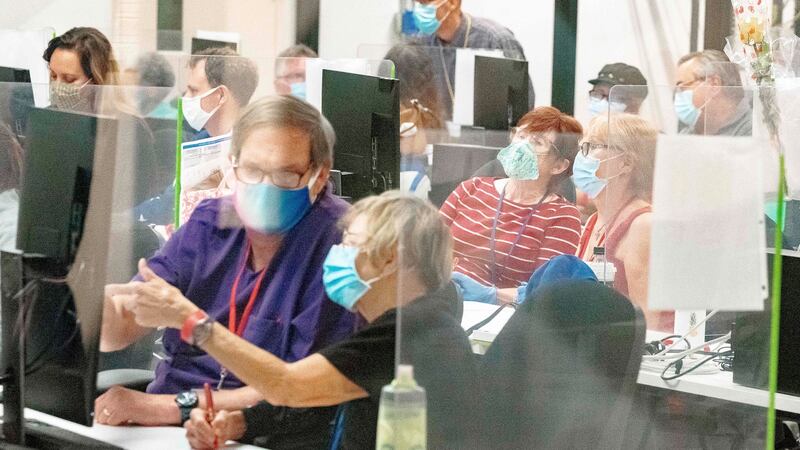
Joe Biden’s margin of victory: 10,377 votes, or 0.31 per cent
Certification deadline: November 30th
State court cases
Name: Donald J Trump for President, Inc et al vs. Katie Hobbs et al
Relief sought: Prevent Maricopa County certifying its results and review all over-votes
Current status: Moot
Number of ballots at issue: 191
The Trump campaign’s case largely repackaged previously debunked claims that Republican voters who encountered issues with voting machines were encouraged to mark ballots with Sharpie pens that would invalidate their votes.
The claim was that Sharpie ink might bleed through the paper and create an "over-vote", where a ballot indicates a preference for more than one candidate. Arizona election officials have repeatedly said that ballots marked with a Sharpie were still counted.
The number of “over-votes” of any kind in the Arizona presidential race was 191.
At a hearing on November 12th, the lawyer representing the Trump campaign admitted that one of their witnesses was his business partner, and that they knew some of the witness affidavits the campaign had collected via an online form were effectively spam.
On Friday the Trump campaign said in a filing that the case was now moot because Arizona had finished counting its votes and the margin was far greater than the number of over-votes.
GEORGIA
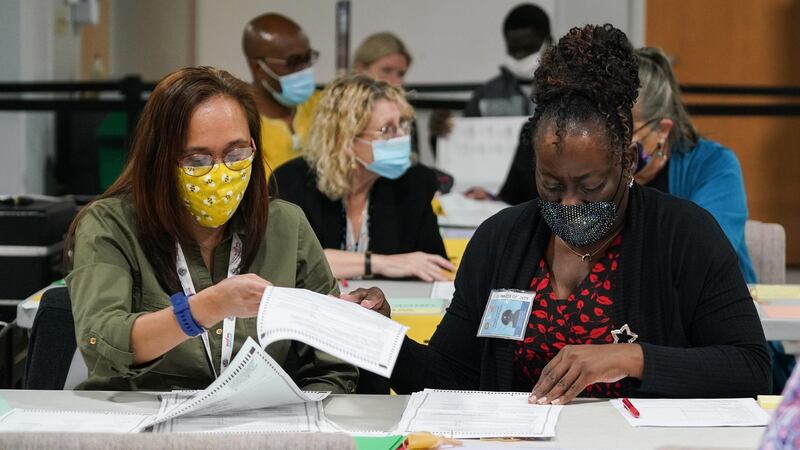
Joe Biden’s margin of victory: 14,172 votes, or 0.29 per cent
Certification deadline: November 20th
State court cases
Name: In re: Enforcement of Election Laws and Securing Ballots Cast or Received after 7pm on November 3 2020
Relief sought: Segregate mail ballots that arrived after deadline
Current status: Dismissed
Number of ballots at issue: 54
The Trump campaign had claimed that vote counters in Fulton County, which includes Atlanta, had not been properly separating mail ballots that arrived before and after an election-day deadline. To support these claims, they included claims from a poll watcher who thought he saw 54 late-arriving ballots mixed in with other ballots.
A judge dismissed the case at a hearing on November 5th, finding “no evidence” that the 54 ballots had in fact arrived late. – Copyright The Financial Times Limited 2020










